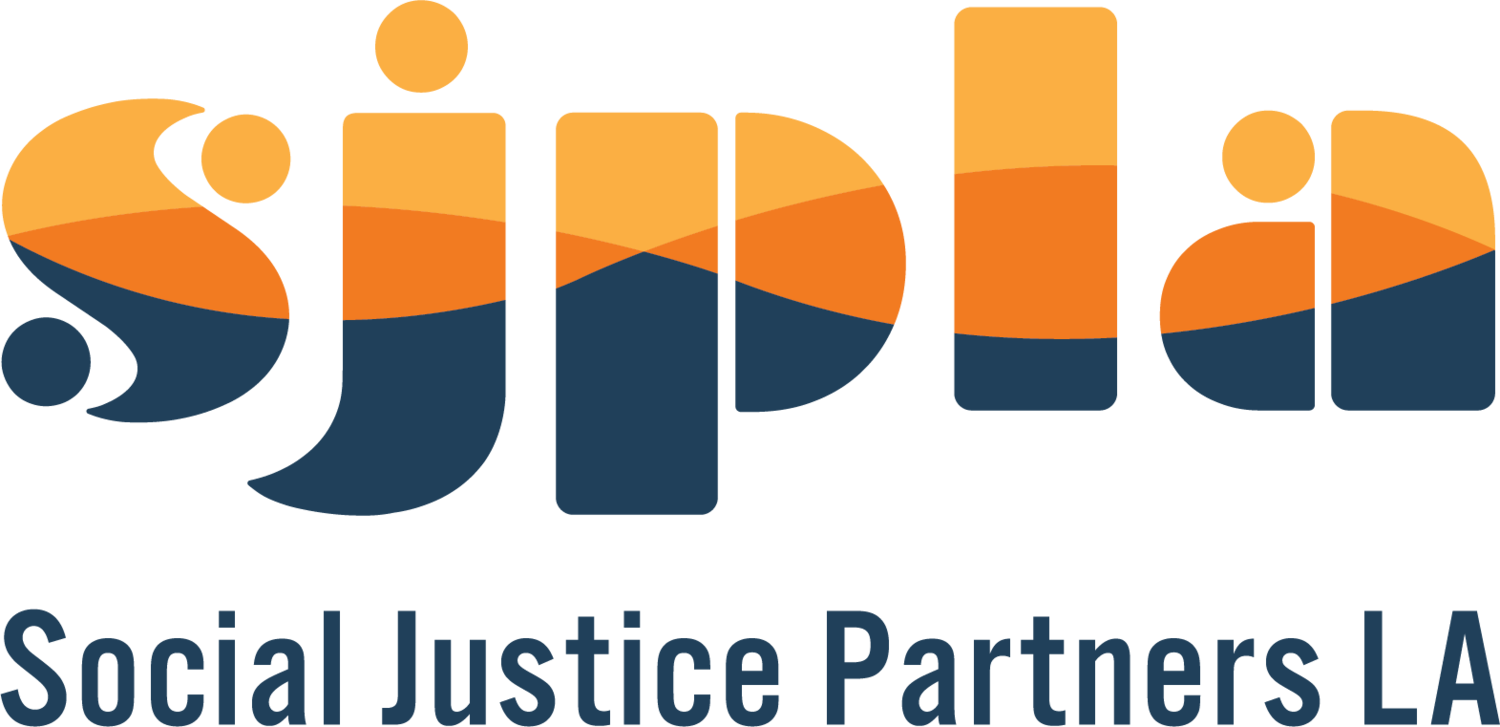Reimagining Investment Policies
A few years ago, our team at Social Justice Partners Los Angeles (SJPLA) found ourselves wrestling with a contradiction that many nonprofits face. We were reviewing our outdated investment policy statement, the document that guides how we handle our organization's money, and something felt misaligned with who we are.
SJPLA values include "acknowledging, shifting, and sharing power" and we believe in redistributing wealth and power to pave the way for justice and liberation. Yet there we were, looking at a standard investment policy that could essentially be used for wealth accumulation.
The Missing Question in Our Old Investment Policy
When our team started researching examples of investment policies from other organizations and our own, we noticed something striking. Every policy we found talked about building up operating reserves, typically six months of expenses, but none of them addressed a crucial question: What do you do once you've reached your target reserve amount?
The silence on this question speaks volumes about our sector's approach to money. The implicit answer seemed to be: keep accumulating. But that doesn’t align with our organization's values and mission.
Reimagining Our Approach to Money Through Collective Wisdom
Our finance committee, then comprised of Mark Loranger, Amber Sheikh, Margaret Hardin, and Vera DeVera, became the space where this transformation began. When visiting the old policy, we discovered that it didn’t require editing, it required reimagining. Then something important happened. When we all agreed that we don’t hoard wealth, Mark asked, "Well then we don't hoard wealth. So what does that mean?"
That question opened up a conversation among our committee members. Together, we began reimagining what became our "Investment & Purpose Policy," a document that not only guides how we invest our money but also reflects our shared purpose and values.
Our Collective Solution: The Investment & Purpose Policy
The key addition to our policy is straightforward: If both our working capital and operating reserves buckets are fully funded, we take the surplus to our Board of Directors to decide together how to redistribute it.
As a team, we didn't dramatically change our approach to investments themselves. As our policy states, "our overall investment objectives are to protect the value of the initial invested assets and prevent loss." We're not trying to maximize returns or play the market. We mainly use certificates of deposit (CDs) and other safe, short-term instruments.
What changed was adding explicit language about what happens when we exceed our needs. Our policy now states:
"In the event working capital and operating reserves buckets are fully funded (according to this Investment Policy) the Board, at its discretion, can determine how we approach the surplus. Since we seek to not amass or hoard wealth, our Board will help us determine how we'll redistribute the surplus."
We also changed how we calculate our operating reserve needs. Instead of looking backward at past expenses (which is standard practice), we decided to look at our current year's budget.
Living Our Values When It Gets Hard
At our last board meeting, we reviewed our current climate and the question came up: Given the current political and economic climate, should we consider saving more money rather than redistributing it once we hit our six-month target?
This is exactly when our written policy proved its value. It reminded us of our commitments when fear started creeping in.
I appreciate that we have this explicitly in our investment and purpose policy. We can make these commitments when times are good, but if we’re truly committed to our values, we need to honor them when tested with challenging circumstances.
A Reflection for Our Sector
During uncertain times like now, the impulse to hold back intensifies across our sector. But we believe this is precisely when we should be giving more, not less. Consider our Racial Equity in Homelessness Initiative: frontline workers are often the ones doing the vital work of serving communities in need, yet they're frequently under-resourced. We serve as the intermediary between funders and the organizations supporting these communities. If we and other funders start hoarding resources during challenging times, it ultimately impacts those frontline workers and the people they serve when they need it the most.
We've been inspired by foundations like the Marguerite Casey Foundation, which dipped into their endowment to give out significant funds. That kind of action helps communities during tough times—rather than protecting wealth for self-preservation.
Start with Reimagining, Not Editing
If your organization is revisiting policies, our encouragement is this: don't get wrapped up in what currently exists. Instead, imagine what you would want if you were creating it for the first time. Ask: What would this policy look like if we were truly living our values? What if we approached this from a place of abundance rather than scarcity?
Many organizations have values statements, but the real test is whether practices—including financial ones—actually align with those stated values.
At SJPLA, we had gone through a multi-year process of getting clear on who we were and what our values were as an organization. This collective clarity gave us the confidence to question our existing policy and reimagine what was possible together.
It wasn't about editing an old document. It was about reimagining how we relate to money as an organization committed to social justice.

